Eberbach Abbey is a former Cistercian monastery located in the heart of the Rheingau, not far from the town of Eltville. The abbey can trace its roots back to the 12th century, but, as one might expect, its buildings have been altered and added to many times since then.
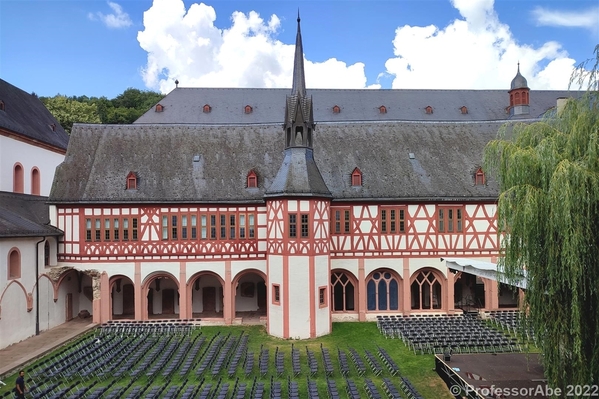
When we paid a visit (in July 2022), preparations were being made for an annual music festival—see photo above—and there was also renovation work going on in key areas. Unfortunately, therefore, we did not have the tranquil visitor experience we expected and nor did we see the site at its best. However, we did our best to ignore the distractions and explored the parts we were able to access.
Pictured below is the 'laymen's refectory'. Today this large hall is used to display twelve ancient wine presses, the oldest dating from 1668.
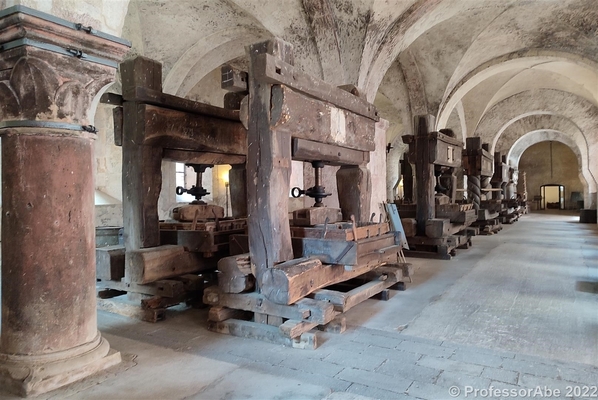
There are also extensive wine cellars.
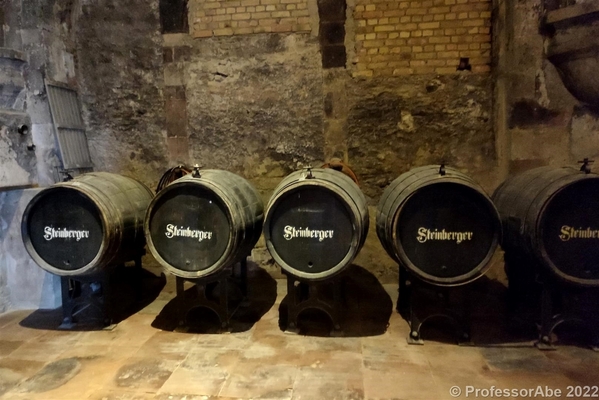
If you think you are detecting a theme here: we are in the Rheingau after all - which is one of Germany's premier wine growing areas. More specifically, however, Eberbach Abbey has been a major player in the wine sector for centuries. In the middle ages the monks owned around 300 hectares of vineyards, apparently making the abbey the largest wine estate in Europe. The wine-making tradition continued after secularisation, although the ownership of the abbey and its vineyards changed several times. In 1945 it passed to the state of Hesse, which by virtue of this fact is now one of the largest producers of quality wines in Germany.
The wines are mainly whites, with Riesling the main grape variety.
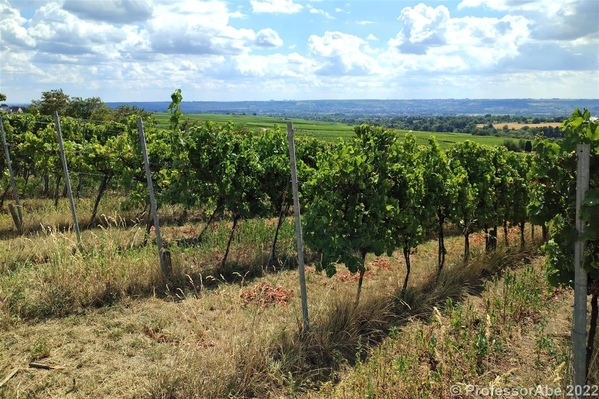
Moving away from the topic of wine and continuing with our brief look at the abbey, the photo below shows the monks' dormitory. It is huge, but one end was blocked off for what looked like extensive renovations.
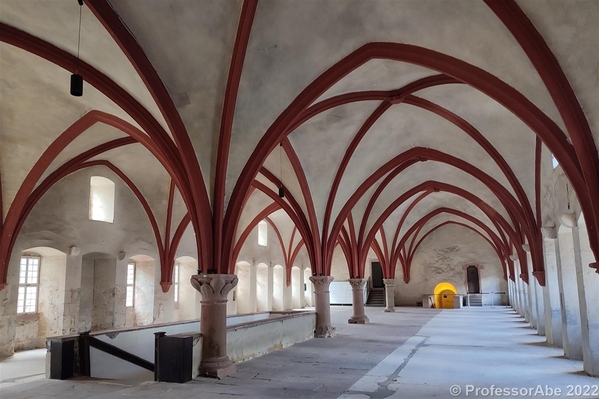
Similar cross-ribbed vaulted ceilings can be found in the cloisters.

The monks' refectory, pictured below, was refurbished in the 18th century and has a stucco ceiling. It is now used as a meeting room.
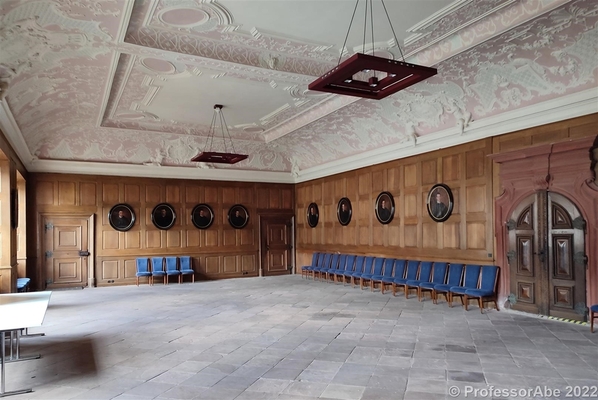
There is a lot more to see, such as the abbey church and the monastic cells. You will need about two hours to do a complete tour around the buildings.
There is a good website with plenty of information about the abbey and its history as well as details about opening times, admission charges, etc. It seems that an earlier version had a section in English, but this is no longer there.

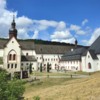





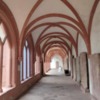

Comments (0)